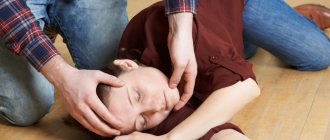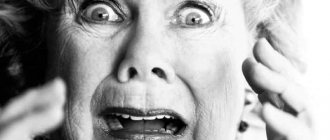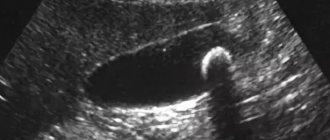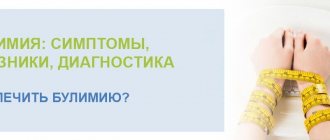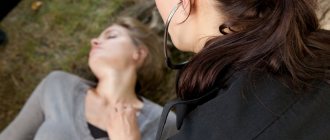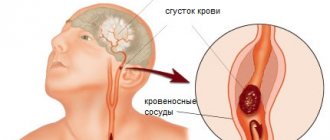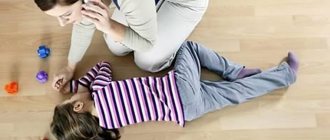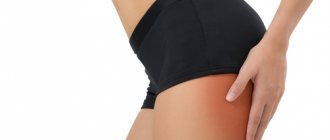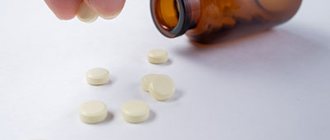Patients of different genders and ages will have different symptoms and consequences of the disease. For example, signs of stroke in older women may be nonspecific (unlike symptoms in men). That is why it is important to monitor your own condition and the condition of loved ones at risk more carefully.
Patterns of development of the pre-stroke state
Primary signs of a pre-stroke condition in elderly women may be nonspecific. May appear:
- frequent headaches;
- nausea;
- malfunction of the sense organs.
Similar symptoms can appear with the progression of many diseases, including hypertensive crisis, a drop in sugar levels, and others.
However, despite the nonspecificity of the symptoms, it is still possible to recognize a pre-stroke condition. There are several factors that allow you to determine pathology at an early stage:
- The pre-stroke state was preceded by a long period. It is clear that transient ischemia cannot develop suddenly over a few days or hours. There is always an initial stage from which signs are taken into account. This stage usually takes 14-21 days, but in some patients it can last longer.
- The general condition worsens. In women, pre-stroke is much more severe than in men and often ends in necrosis.
- The manifestations are more pronounced. This factor is directly related to the previous one.
- The likelihood of an emergency occurring is much higher. Most often it is characterized by tissue death.
Calling a doctor to your home
An experienced neurologist visits the patient’s home and provides first aid for signs of a stroke. What a doctor can do at home:
- Diagnostics . The neurologist examines the patient, measures pulse, blood pressure and temperature, and conducts motor and speech tests to assess the severity of the condition.
- Emergency hospitalization. When an acute pre-stroke condition or a stroke itself is recognized, the medical team quickly and safely transports the patient to the clinic.
- Eliminate symptoms. If the patient’s condition does not cause acute concern, the doctor conducts therapy at home. The complex of medications helps restore cerebral circulation, eliminates disturbances in heart rhythm and blood pressure.
Types of disease
There are quite a large number of types of stroke. The classification of the disease includes division according to the provoking causes, the mechanism of progression, and the characteristics and size of the lesion.
Usually the following types are distinguished:
- ischemic;
- extensive;
- hemorrhagic;
- lacunar;
- microstroke;
- spinal;
- repeated;
- spicy.
Ischemic stroke is considered the most common. The cause of the pathology may be a disruption in the transport of nutrients and oxygen to brain cells (usually due to narrowing of vascular channels).
Hemorrhagic stroke is a consequence of rupture of the vascular channels of the brain, as a result of which blood fills the cavities. This type entails the appearance of edema and hematoma.
A major stroke is any massive lesion. Typically, such a lesion has more severe symptoms and often leads to death or long-term disability of the patient.
Classification by severity
Based on the severity of clinical manifestations and the severity of brain damage, stroke can be divided into the following subtypes:
- transient ischemic attacks;
- micro-stroke (usually formed against the background of third-party chronic pathologies - hypertension or thrombosis, lasts from 2 to 21 days);
- moderate severity (recovery from such a lesion takes several months, swelling of the brain structures and dysfunction of consciousness do not appear);
- extensive (the most severe subtype of all, since it is formed in the beds of large vascular canals, the symptoms are the most pronounced and can lead to paralysis or death of the patient).
Parietal lobe
Responsible for tactile sensitivity and some other functions.
- Inability to recognize objects blindly.
- Physical hallucinations. They manifest as unpleasant sensations under the skin. The patient complains of movements and swarming.
This is the result of false signals from the brain to the nerve endings along the reflex arc. Hence the itching, burning, desire to scratch the suspected location of discomfort.
Something similar is observed in mental illnesses; it is necessary to distinguish the conditions from each other.
The main differential feature is complete criticism of one’s own position. These are the so-called senestopathy.
Another option is apparent touches from the outside, which in reality are not there. Tactile sensations are false.
Possibly inverted state. The patient does not pay attention to individual parts of her own body and does not recognize them as her own.
- Complex clouding of consciousness. Oneiroids. All senses are involved, the patient is completely at the mercy of the illusory world that her consciousness creates. Duration - from a couple of minutes to several hours. The critical state ends with apathy and a depressive mood under the influence of negative false images.
- Lack of purposeful mental activity. The victim cannot perform simple arithmetic operations and lacks the ability to read and write.
Cause of development and risk groups
Stroke is one of the most serious diseases that occurs in the blood vessels of the brain. It leads to a serious disruption of blood circulation in any part of the circulatory network.
Since most of the functions of the human body are controlled by the nervous system, and it is, accordingly, controlled by the brain, any pathological processes and disturbances in its work will lead to failure of the motor processes of the limbs, paralysis or even death. Patients lose their speech, develop serious problems with memory and vision, and lose sensitivity and balance.
The risk group includes people suffering from the following disorders:
- hypertension;
- diabetes;
- obesity;
- elevated cholesterol levels;
- arrhythmia;
- sedentary lifestyle;
- hemophilia.
Women most often experience stroke after 60 years of age. Patients with factors that can provoke a stroke need to be especially careful. These include:
- regular severe stress;
- physical exhaustion or fatigue;
- blood pressure surges;
- changes in atmospheric pressure (if the patient is weather dependent);
- heavy alcohol intoxication;
- overheat;
- hypothermia.
Main symptoms
The following symptoms are typical for women:
- severe headaches (characteristic of migraines);
- decreased intensity of facial expression activity;
- failure of nerve conduction in the facial muscles;
- disturbance of speech and motor activity of the limb on one side;
- visual impairment;
- dysfunction of the vestibular apparatus;
- gag reflex and uncontrollable muscle contractions;
- self-perception disorder;
- sagging corner of the mouth;
- feeling of mental unsettlement.
Comprehensive stroke treatment
First of all, doctors need to stop the hemorrhage, relieve swelling, and carry out prophylaxis immediately after the patient’s admission to the hospital, which will prevent a recurrence of the attack. Next, the patient will receive symptomatic treatment based on the individual clinical picture.
Typically, the therapeutic regimen is developed in an interdisciplinary meeting. The commission includes a therapist, cardiologist, pharmacologist and some other specialized specialists. This helps minimize the risk of complications or adverse reactions from the use of certain medications.
The body’s functionality is supported through the following procedures:
- IVL (artificial pulmonary ventilation);
- cleaning the oral cavity from vomit and mucus;
- breathing exercises;
- maintaining blood pressure at the required level;
- droppers that help thin the blood and restore salt balance;
- treatment with anticoagulants;
- if swallowing ability is lost, feeding through a tube.
The success of therapy will depend on the quality of medical care provided and the condition of the patient’s body. Rehabilitation will also play a major role, but it begins only after the 3rd week of continuous treatment of an attack.
Hospitalization to the clinic
In case of acute cardiovascular, motor and speech disorders, we recommend hospitalization of the patient in the hospital of our clinic. Advantages of inpatient treatment:
- Full diagnostics. In a hospital setting, the patient undergoes comprehensive instrumental diagnostics: a biochemical blood test for glucose and cholesterol levels, electrocardiography and daily monitoring, ultrasound and Dopplerography of the carotid arteries of the neck, magnetic resonance and computed tomography of the soft tissues of the brain.
- Identifying the causes of the attack. A thorough hardware examination helps to detect the cause of the pre-stroke condition - atherosclerosis, hypertension, disorders of the pumping function of the heart and other pathologies. And making an accurate diagnosis allows you to begin the necessary treatment and prevent the risk of stroke in the future.
- 24/7 care. In the hospital, the patient is provided with 24-hour medical supervision. Experienced medical staff will be able to prevent a new attack in time, or provide emergency assistance if your health worsens, and minimize the consequences.
- Comprehensive restoration. The patient undergoes a program to restore healthy functioning of the cardiovascular system and cognitive functions of the brain. At the same time, he is in a safe, comfortable environment, maintains a healthy sleep schedule and proper diet, and is isolated from the stress factors of the home environment.
Consequences of stroke for elderly patients
The older the patient is at the time of admission to the hospital, the more severe the pathology will be and the lower the chances of recovery. The following may reduce the likelihood of full recovery after a stroke:
- It is not always possible to dissolve blood clots in blood vessels with medications in elderly patients. Pensioners usually have a large number of contraindications to the insertion of catheters and surgical intervention, so the risk of death increases.
- The younger age of the patient guarantees the restoration of lost functions thanks to an alternative blood supply. Age-related changes in vascular channels (including atherosclerosis) significantly reduce the likelihood of complete recovery in elderly patients.
- Age often goes hand in hand with a variety of third-party chronic diseases. They usually affect the kidneys, gastrointestinal tract, heart muscle, respiratory organs, etc. And since a stroke is a huge stress for the body, the progression of all existing chronic pathologies is inevitable. This significantly influences medical prognoses.
- Stroke goes hand in hand with infectious complications. Since one of the consequences of a stroke is paralysis, due to which the patient is forced to constantly lie motionless in bed, the formation of bedsores and congestion is inevitable. Large areas affected by purulent lesions are the best way for infections to enter the body.
Stroke is especially dangerous for older women, because the likelihood of a second attack following the first is extremely high. Usually the consequence of such an illness is loss of consciousness or coma. So you should be especially careful about your health in retirement age, because full recovery of the body after a stroke is almost impossible in the presence of third-party chronic pathologies or predisposition.
